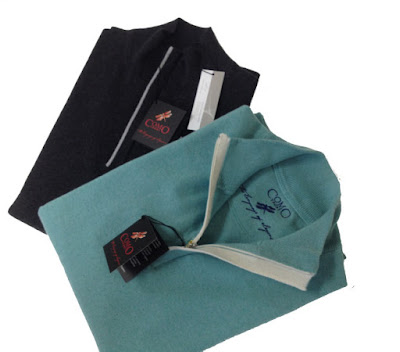This will not be an article that suggests holiday props or Xmas
trees. I assume everyone
has their own way of dressing up the shop for
Halloween, Thanksgiving and Christmas. What I thought would be
appropriate to discuss however would be the different modes that shops find
themselves in this time of year and what that means to the merchandising
effort.
Some facilities, for example, find themselves over-inventoried and
not in the frame of mind to buy with the gift giving of their patrons as an
incentive. Many clubs save open to buy in an effort to be able to provide the
latest hot items for the members to shop and see that as an important part of
the service they provide. Depending on seasonality some clubs retail drops off
so significantly with lack of play that there is no real effort made to entice
the member or regular to think "shop with us". Some shops are closed
by the holidays and others are ramping up for snow birds. No matter where you
are in this scheme of things if you have an email list you can attempt to do
business by offering to drop ship gift-wrapped inventory or special orders. The
inventory you do own can be pre-wrapped or bundled with ribbon, apparel items
can be boxed as outfits and anything smaller than a shoe box can be suggested
as stocking stuffers.
For the shops with open-to-buy and festivities planned, here are
some cool ideas for gift-giving some of which I’ve mentioned here in the past:
Signs by the Sea – Basically if you can dream it you can
order it on a rustic sign form Kathy Yevchak (signsbythesea@optonline.net).
This is a very cool new company that is easy to get started with and can
provide that customized gift with the golf touch.
KJUS Outerware – Sportswear made of innovative, high performance
fabrication with a distinctive clear design. The perfect gift for the outdoors
man.

Marc Joseph – designer brand of fashion forward footwear. The
driver mocs do well in shops, but their entire line is built with attention to
detail.
Fore Kids Golf – Holiday gift giving is really about the
kids and every shop with a logo that members have pride in can sell this
product with the same pride. The clothes are made with luxurious soft Pima
Cotton and are all designed to be logoed. Kelsey Mclean is the principal.
Seamus Golf - A head-cover company that has pouches, bags and hand-forged on
course tools that are great for gift giving
Winston Collection – leather goods embossed with the club logo. My
favorite are their
embroidered leather pillows.
 Personal Golf Fan - Battery powered fan for the cart is
a great gift item for the avid golfer particularly in the warmer climes.
Contact Cynthia Wark(cynwark@aol.com).
Personal Golf Fan - Battery powered fan for the cart is
a great gift item for the avid golfer particularly in the warmer climes.
Contact Cynthia Wark(cynwark@aol.com).Como Sport - The best Italian cottons, merino and cashmere for the discerning. Call Jimmy Glass.
Always the go-to gift that should be mentioned here and should be
mentioned often in the shop is the gift certificate. No matter what mode your
holiday business finds itself this time of year, gift certificates are easy and
don’t require new inventory. Many businesses, particularly restaurants have
contests for employees with significant prizes to those that sell the most gift
certificates.































